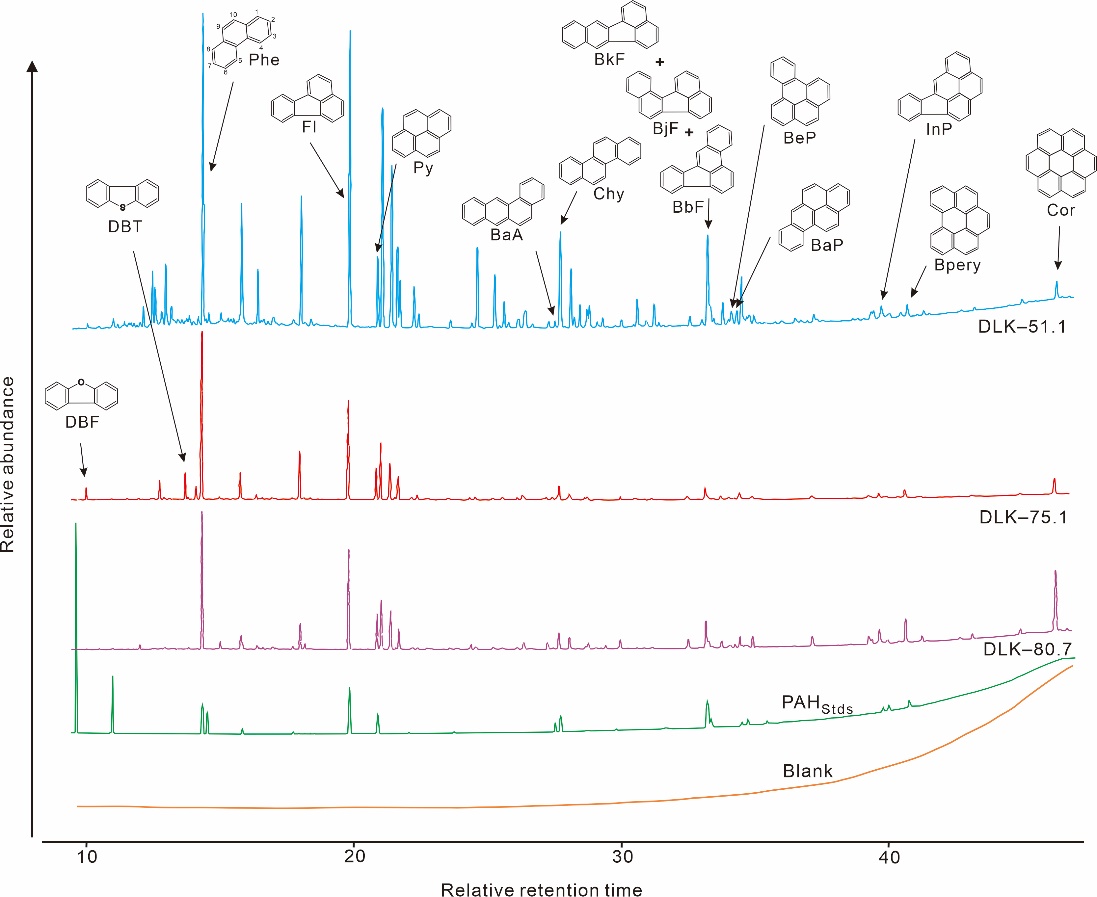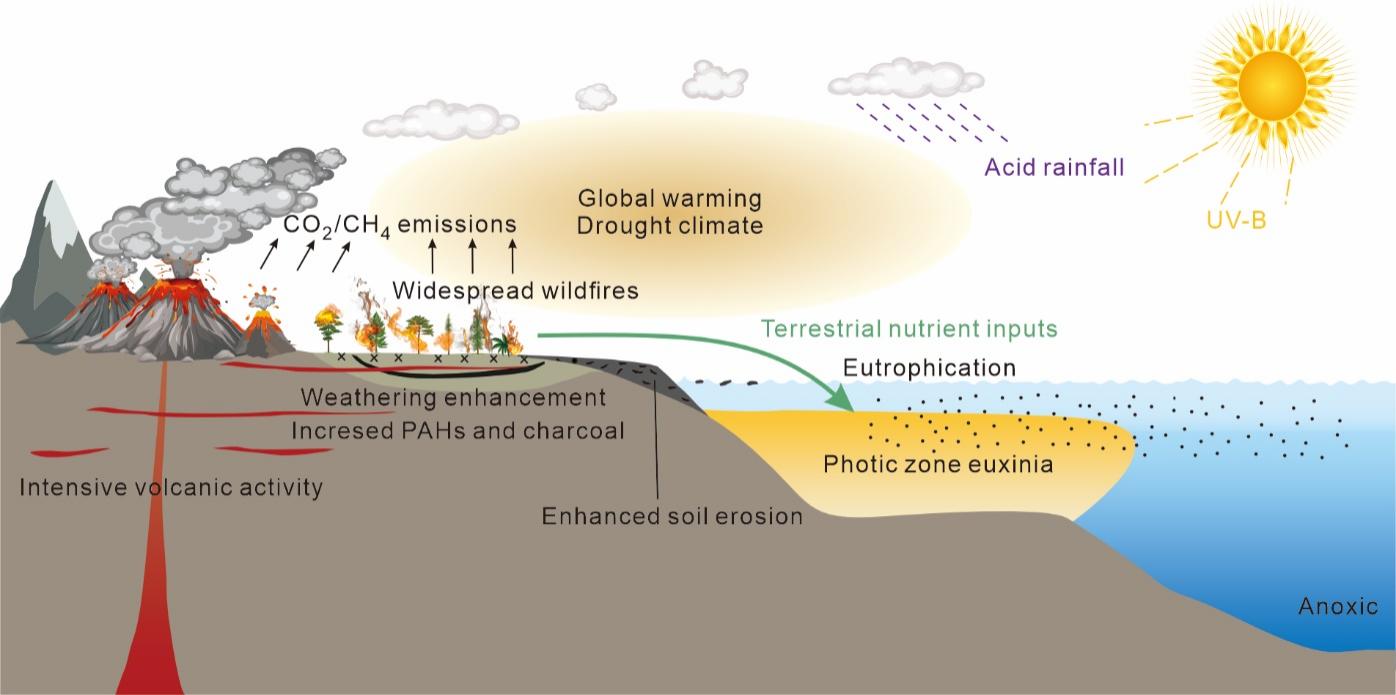The Permian–Triassic (P–T) mass extinction was the most severe mass extinction event of the Phanerozoic and caused catastrophic changes in the marine and terrestrial ecosystems. This environmental deterioration has been triggered by emissions of massive greenhouse and poisonous gases from the Siberian Traps large igneous province and intensive large-scale continental arc volcanism. However, the response of terrestrial ecosystems in different regions to the P–T mass extinction remains unclear.
Recently, the Late Paleozoic research group from Nanjing Institute of Geology and Palaeontology, Chinese Academy of Sciences (NIGPAS), and researchers from Nanjing University confirmed the occurrence of high-temperature wildfire events and enhanced soil erosion associated with intense volcanism during the P–T transition based on the PAHs and Hg contents at the Dalongkou section in the northern mid-latitude Northwest China, which provides important evidence for understanding the evolution of terrestrial ecosystems during the P–T transition. The results were recently published on Palaeogeography, Palaeoclimatology, Palaeoecology.
This study leveraged a combined approach to report a multi-proxy geochemical study of combustion-related PAHs and Hg concentrations in sedimentary rock samples from the classic and well-studied P–T terrestrial Dalongkou section. PAH records re?ect an obvious vegetation changeover accompanied by frequent high-temperature combustion events and enhanced soil erosion, the Hg enrichments and organic carbon-isotope provide robust evidence for volcanic activities during the P–T transition.
Prof. ZHANG Hua from NIGPAS says, “based on biostratigraphic distributions and charcoal abundance, we hypothesize that terrestrial ecosystems experienced substantial crises and changes owing to volcanism and frequent wildfire combustion events on land during the P–T transition.” Terrestrial responses were resolved in multiple intervals. These stages exhibit a close relationship between severe climatic conditions, wildfire combustion events, and floral changeover, reflecting a progressive trend toward a drier climate triggered by volcanic activities. ZHANG add, “consequently, we proposed that increased high-temperature combustion events under worse climatic conditions contributed to terrestrial vegetation change during the latest Permian.”
This work was funded by the National Natural Science Foundation of China and the Strategic Priority Research Programs of the Chinese Academy of Sciences.
Reference: Jiao, S. L., Zhang, H.*, Cai, Y. F., Jin, C. F., Shen, S. Z., 2024. Polycyclic aromatic hydrocarbons (PAHs) evidence for frequent combustion events on land during the Permian–Triassic transition in Northwest China. Palaeogeogr. Palaeoclimatol. Palaeoecol. https://doi.org/10.1016/j.palaeo.2024.112152.

Figure 1 GC-MS chromatograms and structures of PAHs from the Dalongkou section.

Figure 2 Stratigraphic variations organic carbon-isotope, Hg concentration, DBF concentration, ∑pyPAHs concentration, clumped isotope-derived paleotemperature records, charcoal abundance and reflectance, and spore-pollen in the Dalongkou section.

Figure 3 Conceptual reconstruction of environment changes in terrestrial–marine systems during the end-Permian mass extinction.
Contact:
LIU Yun, Propagandist
Email: yunliu@nigpas.ac.cn
Nanjing Institute of Geology and Palaeontology, Chinese Academy of Sciences
Nanjing, Jiangsu 210008, China
Download:
